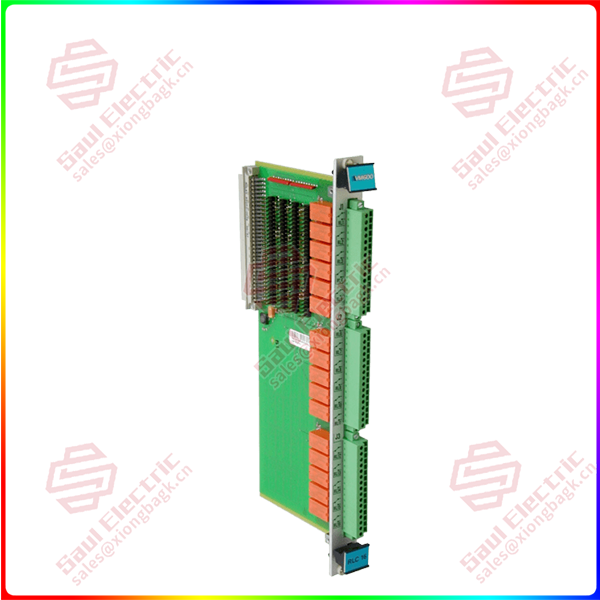The VM600 RLC16 is a high-performance relay card designed for the VM600 Rack-mounted mechanical monitoring system for condition monitoring and mechanical protection. It offers 16 single-pin double-throw (SPDT) relays that can be software-configured to either normal power on (NE) or normal power off (NDE) states to suit different application needs. These relay contacts are operable with screw terminal connectors, providing great convenience and flexibility.
The RLC16 relay card has wireless information access function based on PDA and supports Ethernet /IP protocol, simplifying HMI function in industrial network. In addition, it has enhanced support for barcode, RFID, magnetic stripe reading and Bluetooth hardware, providing users with a complete and flexible application-specific solution. Known for its powerful, flexible configuration and high reliability, the RLC16 relay card is suitable for a variety of scenarios where additional relays are required to extend the functionality of the system.

VM600 RLC16
The RLC16 relay card is physically 6U high, mounted on the rear of the VM600 rack and is directly connected to the rack backplane via a single connector. Its power supply is provided by the VM600 rack, which consumes 40 mA per relay, for a total of 16 relays. The relay card operates in an ambient temperature range of -25 to 65 °C, a storage temperature range of -40 to 85 °C, and operates at 0 to 90% non-condensing humidity.
In addition, the RLC16 relay card complies with the European standards EN 61000-6-2, EN 61000-6-4 and EN 61326-3-1 for electromagnetic compatibility, as well as the Russian standard TR CU 020/2011. It also complies with the electrical safety standard EN 61010-1 and the Russian TR CU 004/2011 standard.
The VM600 RLC16 relay card is part of the Meggitt Vibro-Meter product line and provides an effective solution for shaft vibration monitoring of mechanical equipment with its high reliability, multi-channel monitoring capabilities, high-precision measurement, easy installation and configuration, intelligent diagnostic capabilities, network communication capabilities and other features.
 1 Year Warranty
1 Year Warranty





